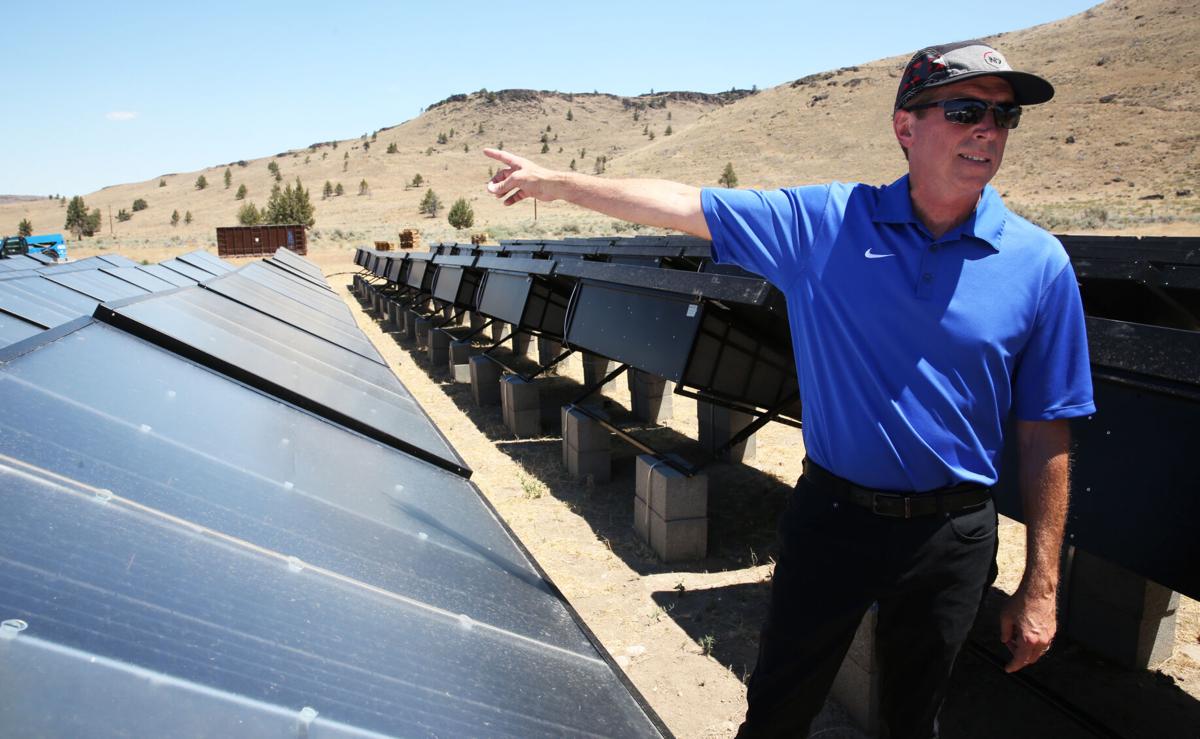This article was published on: 07/1/21 2:36 PM
Inside an open-air warehouse on the Warm Springs Indian Reservation, Jim Souers opens up a spigot to release fresh water into containers that can be distributed for free to members of the community. It’s a blessing for a community that has suffered repeated system failures and boil water notices.
The water is sourced just 50 feet away, in a lot behind the warehouse. But when Souers opens up the building’s back door, there is no stream, lake or well. Not even a container to capture rain. Instead, Souers walks between rows of what look to be solar panels. The panels, he explains, are what produce the water.
The 200 Hydropanels, which generate a low hum when functioning, are producing water from air and sunlight. It’s technology straight out of a science fiction novel that is having an immediate impact in Warm Springs.
Old pipes and pumps in the reservation water system have failed multiple times in recent years, forcing community members to collect donated water from an emergency facility in the center of Warm Springs.
In the most challenging circumstances, Warm Springs residents have gone months without clean drinking water.
That problem could be a thing of the past with the help of the Hydropanels, which are installed at the water farm a mile east of U.S. Highway 26 and at dozens of remotely located homes on the reservation. When the tribes’ water system is shut off, the Hydropanels will still be churning out quality drinking water.
Hydropanels use solar power to extract water vapor from the air and condense it into a liquid.
“We built a water farm to serve as a well into the sky for the community,” said Colin Goddard, director of Source Global, the company that builds the panels. “Community members can access water that would otherwise be difficult to obtain with the infrastructure that they have currently.”
Goddard said the water produced by the panels is similar to distilled water. The unit, which is self-contained and does not need an external source of power, adds minerals to the water to give it an improved taste.
Another benefit, said Souers, is that particulate matter in the air does not affect the performance of the units. You could put one next to a freeway in Los Angeles and the water quality would still be good, he said.
The project site is accessible to the public once a week, on Mondays. Warm Springs Ventures operates the facility and may expand the hours depending on demand, said Souers.
Bottling and selling the water may be possible in the future, said Souers, but for now, it is meant to serve the needs of the 5,000 reservation inhabitants.
“It’s not a system to commercialize at this point,” said Souers. “There could be an opportunity where that may arise, but right now the funds were given with the intention of (providing) free water to serve the community.”
The 4-by-8-foot panels cost around $2,000 each. Private donations funded the purchase of the first 200 panels, as well as the internal system and storage site. The first phase allows the tribes to produce 160 gallons of water per day.
Souers said the tribes plan to install an additional 300 units this year in a phase two effort that will increase capacity to 720 gallons a day. The Confederated Tribes of Warm Springs is paying for this phase with COVID-19 relief funds.
The 35 families who received the panels at their homes were chosen based on need and access to water, said Goddard. Another 15 families expect to receive panels at their homes this year.
In some configurations, homes can receive the drinking water straight into their kitchens, said Goddard. Other families will need to go outside to collect the water. Still, that is easier than traveling to the Warm Springs campus for bottled water.
Around a dozen community members were trained to install and maintain the units.
In addition to the water farm, 10 Hydropanels have also been installed at the Warm Springs Community Action Team, a nonprofit organization. Those panels served as a sort of pilot project to introduce the new technology to Warm Springs community members. Funding to install those panels was through private donations, said Carina Miller, an employee with the nonprofit.
“This adaptive technology is what we really need at Warm Springs,” said Miller. “It’s a source of clean drinkable water that is reliable for the community. It provides relief and assistance.”
Miller said she is excited for the technology to be available for both the community and for economic opportunities.
“It’s a double whammy,” she said.
While the project is still in its infancy, Goddard said there are opportunities for expansion, bringing clean water to other parts of the reservation where fresh water is difficult to access. It’s low-maintenance and has a negligible impact on the environment, he said.
“It’s making water with just sun and air that is around us,” said Goddard. “No matter where you are, you have access to clean drinking water.”




